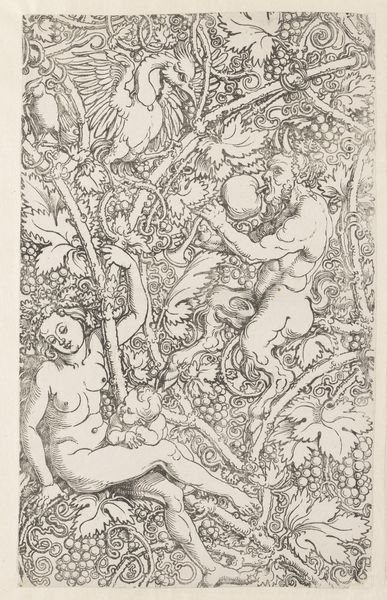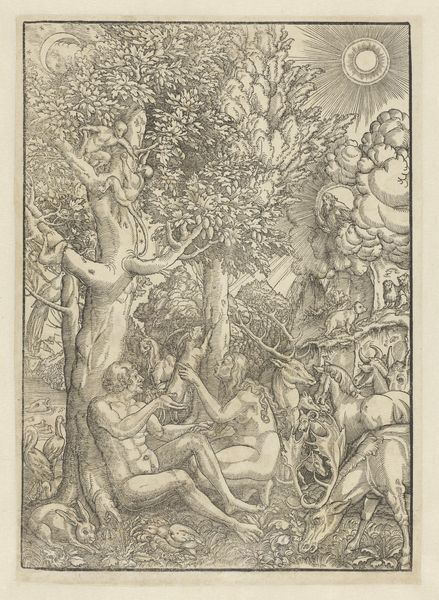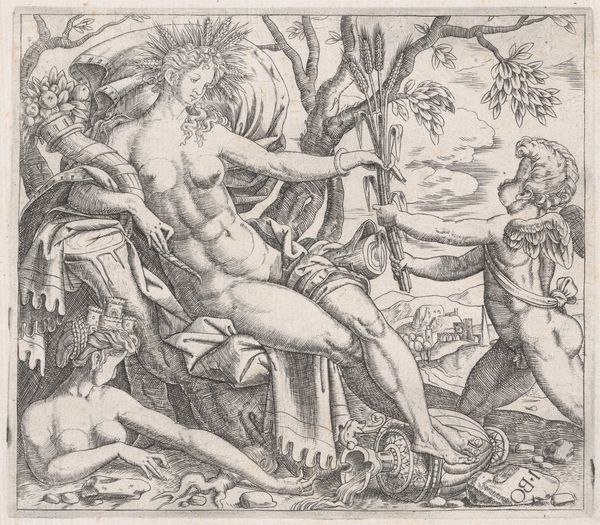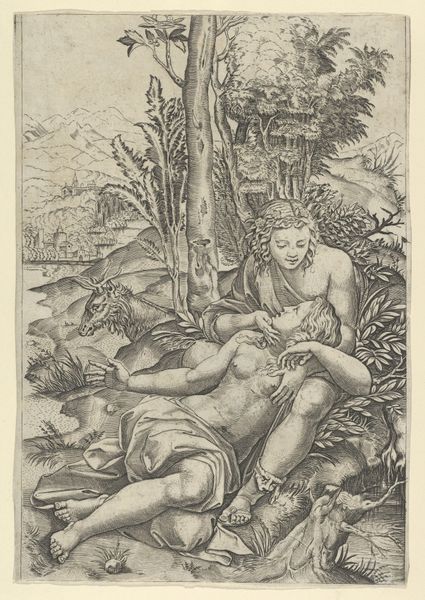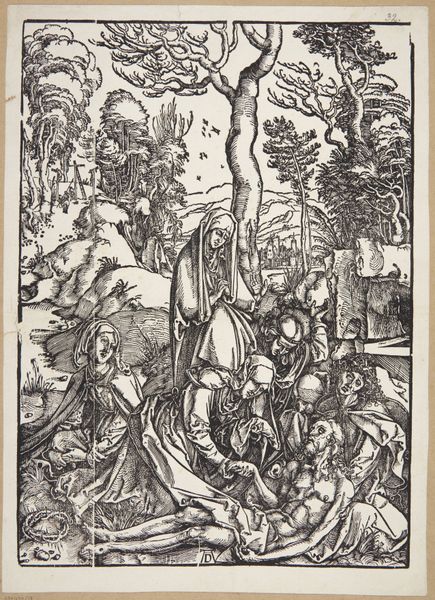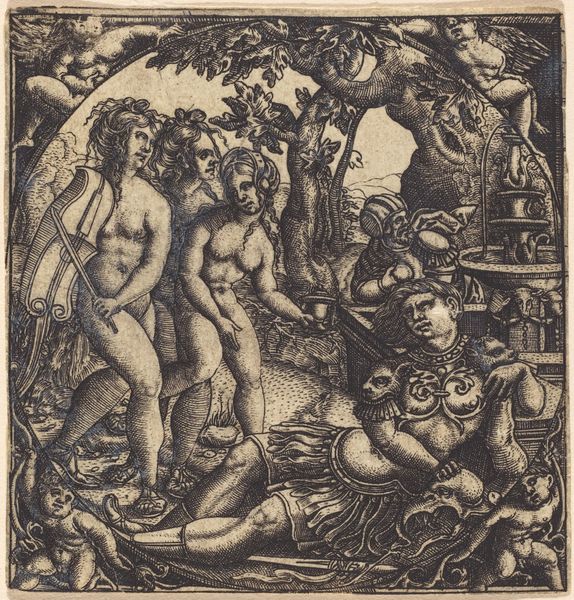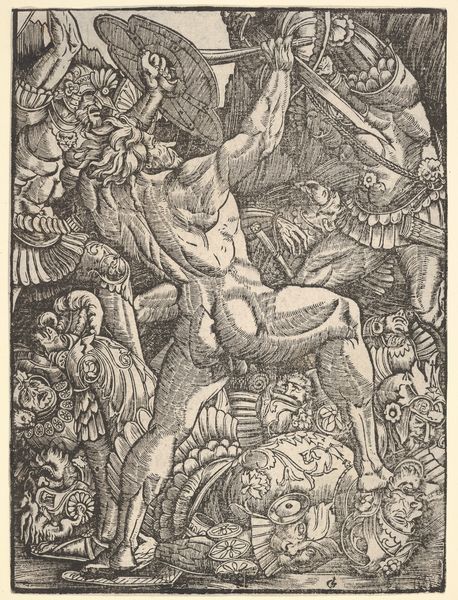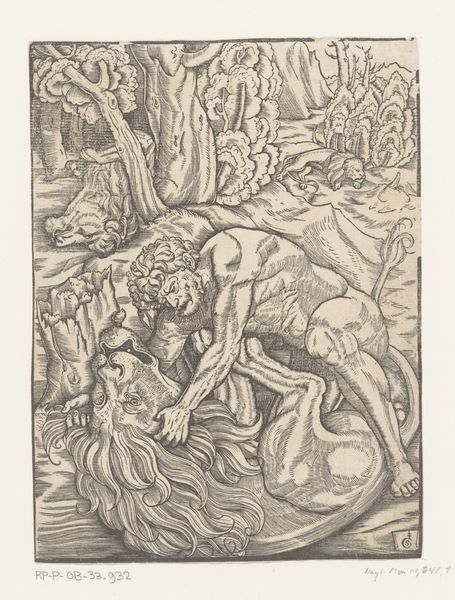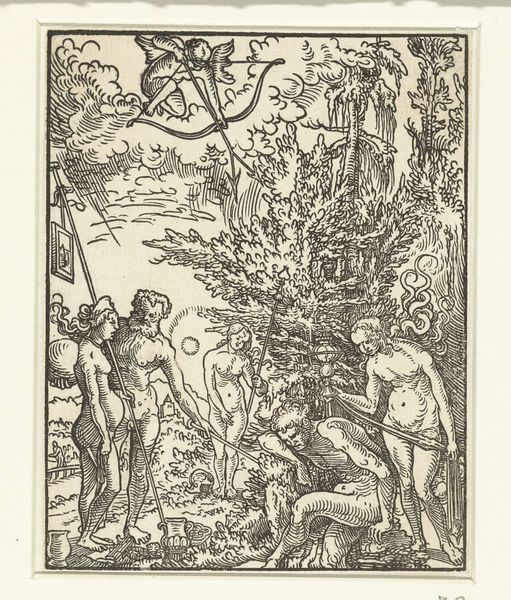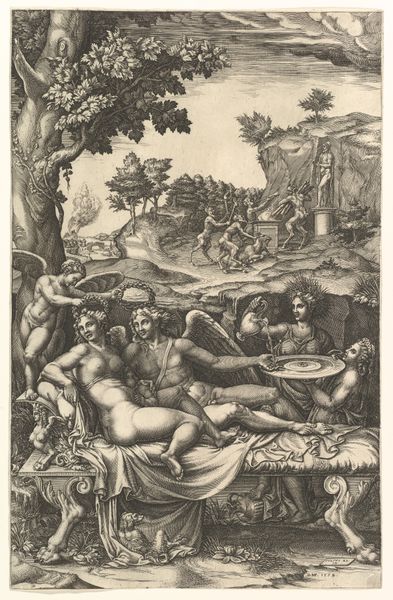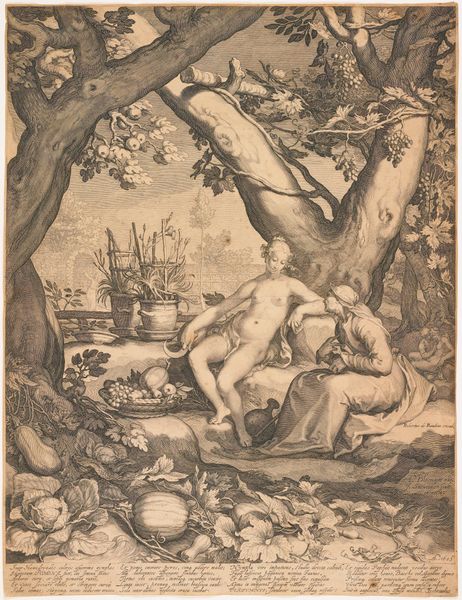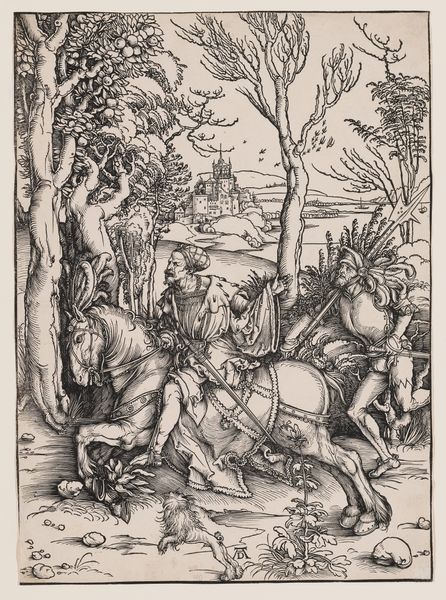
drawing, print, engraving
#
drawing
#
allegory
# print
#
figuration
#
11_renaissance
#
line
#
northern-renaissance
#
nude
#
engraving
Dimensions: Sheet: 21 1/16 × 12 13/16 in. (53.5 × 32.5 cm)
Copyright: Public Domain
Editor: This is "Wallpaper with Satyr Family" made around 1515 by Sebald Beham. It’s an engraving printed on paper, so it’s monochromatic. It depicts figures intertwined within a dense, natural setting and creates a dreamlike quality. What story is this telling? Curator: It's a fascinating piece, isn't it? As a historian, I look at this and immediately consider the role such imagery played in the socio-political context of the early 16th century. Think about who would have commissioned or purchased such a print. Were they using it to showcase classical knowledge, or maybe to create an exclusive and elaborate world on their walls? Editor: Interesting. So, it’s less about the subject and more about how it functioned in society? Curator: Exactly! Prints like this circulated within a specific class, demonstrating an owner’s status, wealth, and understanding of humanist ideals, often connected to power dynamics. It also brings up interesting questions about how this kind of printed artwork, which aims to imitate wallpaper designs, might have been made available, and how its themes resonate with popular trends of the period. Consider the rise of the merchant class, the burgeoning interest in classical themes. How might that influence this artist? Editor: I see... It's almost like an early form of status symbol, presented on paper. Now I wonder how available these pieces were, considering prints could be reproduced! Curator: Precisely! It makes us think about accessibility of art and ideas. Perhaps the "wallpaper" aspect played into wider access, or created an appealing object that spread knowledge. Editor: So by looking at the intended audience and cultural context, we can understand more about the piece’s role within a society that may not appear obvious at first glance. That’s a fascinating perspective. Curator: Absolutely, and by engaging with those aspects we contribute to keeping historical insights relevant today.
Comments
No comments
Be the first to comment and join the conversation on the ultimate creative platform.
